
Perfectly grilled scallops are a star performer at any cookout. The crispy, seared crust gives way to tender, flavorful flesh. Served atop pasta or salad, doused in a butter sauce, or simply enjoyed on their own, scallops provide a memorable bite.
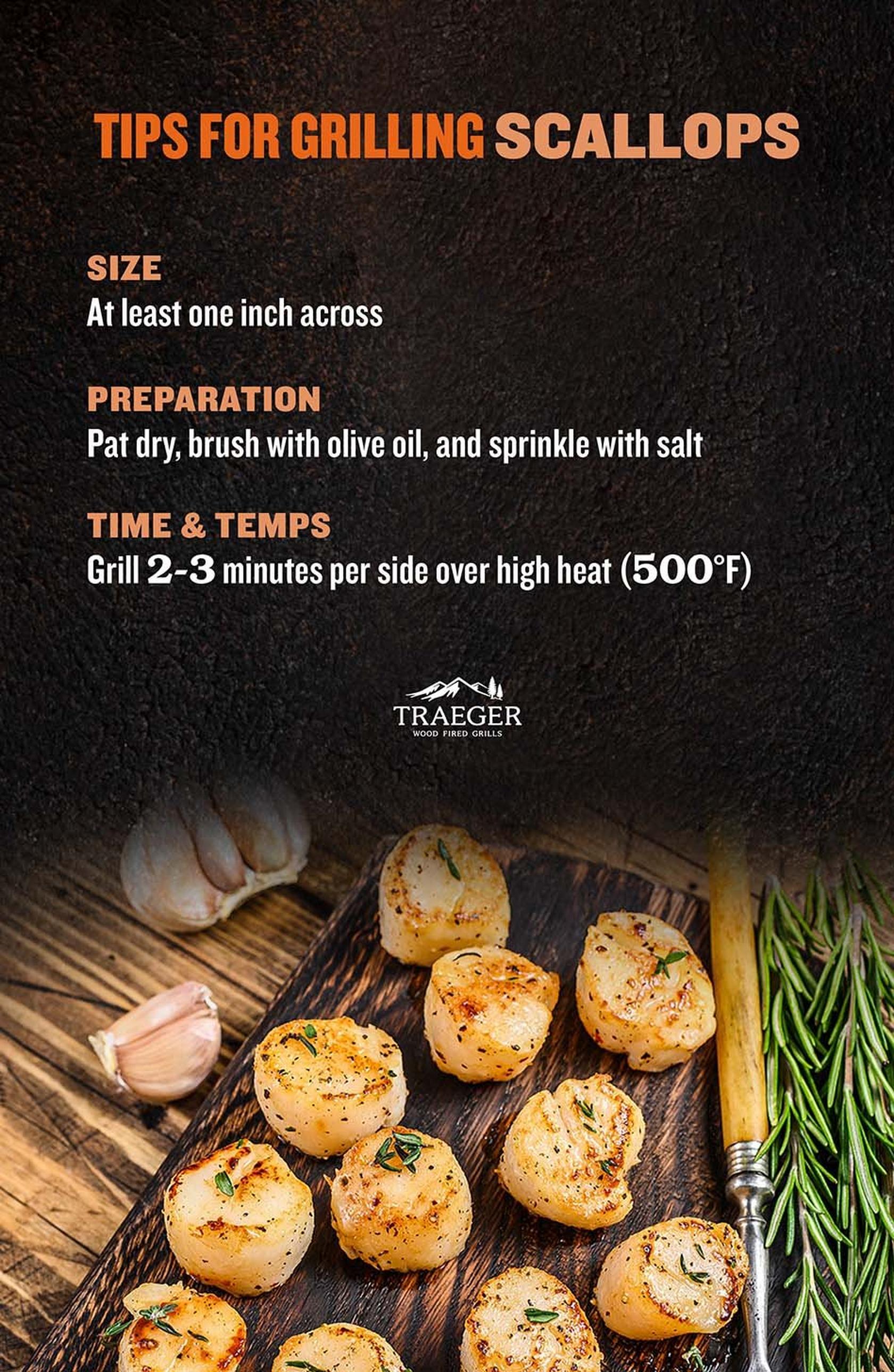
The Steps to Grilling Perfect Scallops
The path to delicious grilled scallops starts well before they hit the grill. Here's how to buy and prepare scallops for the best results.
How to Buy Scallops
When buying raw scallops for the grill, look for these characteristics.
- Size: at least 1-inch across
- Color: slightly translucent
- Shipping method: dry-packed rather than wet-packed
Here's why these guidelines are important.
The size of your scallops is important because you want them to be large enough that they can easily be flipped, and won't slip through the grates of your grill. Larger scallops are usually labeled as "sea scallops."
Scallops are sometimes sold as u10 or u20. The numbers refer to how many scallops it takes to make one pound.
The scallops to avoid when you're grilling right on the grates are bay scallops (which can be 75 to 100 scallops to the pound). They are too small to go directly on the grates.
The color of sea scallops is an indication of quality. Scallops that are starting to go bad or that have been packed improperly will start to turn opaque and white.
The shipping method of the scallops you buy will probably make the biggest difference. Dry-packed scallops are taken directly from the boat to the market. These scallops will have firmer flesh and a better bite.
Wet-packed scallops are injected with a solution to keep them fresh. When you buy them, you're paying for the weight of the solution as well as for the scallop. This solution must evaporate during cooking which increases the cooking time and makes it harder to get the desired sear.
If you're ecologically minded, ask for "diver scallops." These are harvested by divers who choose mature scallops, and avoid disturbing the rest of the ecosystem.
How to Prepare Scallops
To prepare scallops for grilling, arrange them on a clean cutting board.
First, inspect every scallop to see if the abductor muscle (aka side muscle) is still attached. If it's there -- the muscle often comes off during processing -- it will be a small piece of tissue that feels tougher than the rest of the flesh. Simply pinch it off with your fingers.
Then pat each scallop dry with a paper towel. This step will make the surface dryer, which will help you get a better sear on the grill. Use multiple paper towels if necessary. If you notice any grit or dirt on the scallops, rinse them off and pat dry.
Brush each scallop with olive oil, then add a simple sprinkling of salt and grind of pepper. Most recipes call for a dressing or sauce of some sort, but it is applied after cooking.
How to Marinate Scallops for Grilling
You can marinate scallops for grilling, and add flavor before rather than after grilling.
A typical marinade will include oil, an acidic element, a spicy element, and other seasonings as desired. One simple Traeger marinade for scallops includes these ingredients.
- Fresh lime juice
- Extra virgin olive oil
- Traeger Beef Rub
- Thinly sliced green onion
- Diced jalapeño
How Long to Cook Scallops on the Grill
Grill scallops on a grill set to high (500 degrees Fahrenheit) for 2 to 3 minutes on each side.
While the scallops are cooking, try not to move them. This will help achieve that delicious seared crust.
Serve immediately after grilling.
If you're working with a Traeger, you can use your grill to smoke the scallops before the final cook. Smoke scallops on a baking sheet at 165 degrees Fahrenheit for 20 minutes, then remove them, and turn the temperature up to 400 degrees. Then arrange the scallops directly on the grill grate and cook for an additional 15 minutes.
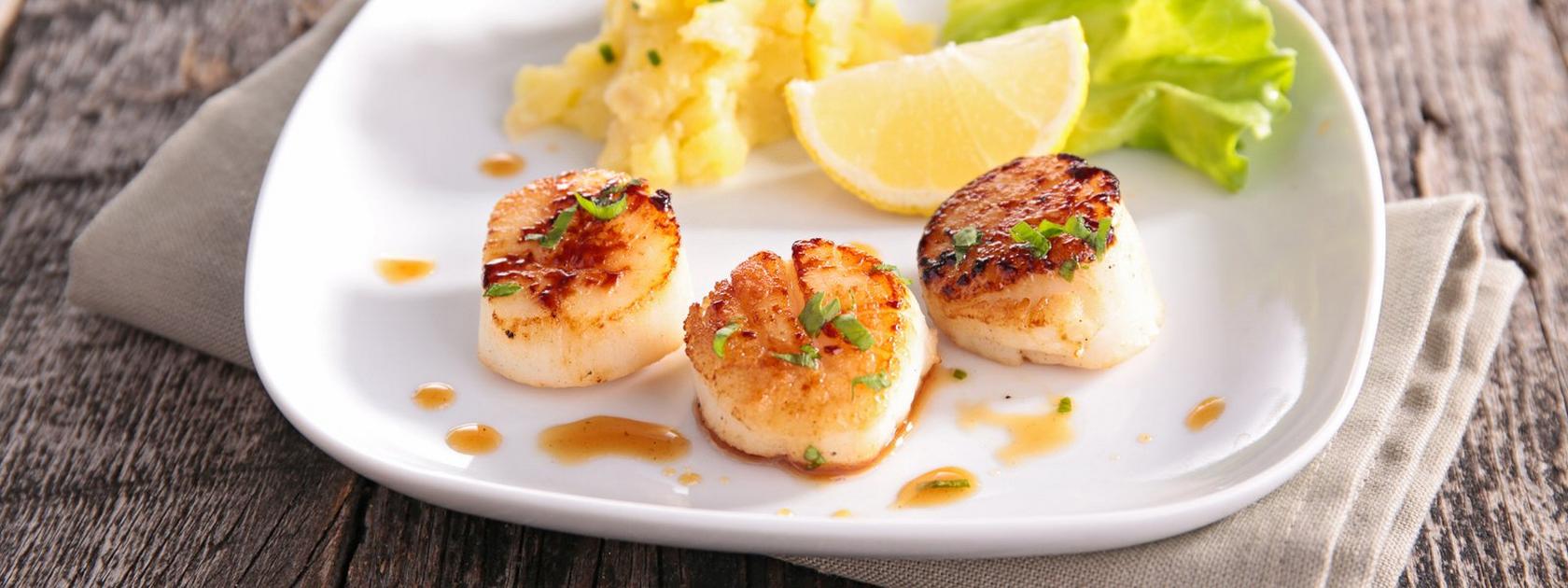
How to Grill Scallops in Foil
Grilling in foil is a good choice if you are working with small bay scallops. With the scallops safely contained in their foil packets, you don't have to worry about them slipping through the grill grates.
Typically, you'll include other items in the foil packet that cook as quickly as scallops, like mushrooms or tomatoes, plus additional fresh herbs and seasonings.
Grill scallop foil packs over medium-high heat (375 degrees Fahrenheit) for approximately 15 minutes.
How to Grill Frozen Scallops
Frozen scallops must be fully defrosted before cooking. The best method is to put the scallops in the refrigerator the night before cooking. For a faster process, run cold water over them until fully defrosted -- but be sure to keep them in their packaging, so the scallops don't get waterlogged.
Once the scallops are fully defrosted, follow the steps above.
What to Eat With Grilled Scallops
Grilled scallops are often served with a sauce or dressing. A basic sauce for scallops contains butter, lemon, and garlic. Spoon it over the scallops immediately upon serving.
Another popular way to serve scallops is in a topping for a fresh vegetable pasta dish, or salad.
The light flavors of spring vegetables and starches are the best accompaniment for scallops because they won't overpower the subtle flavors of the seafood.
You can also serve scallops as part of a seafood feast pair with grilled shrimp, clams, mussels, and other ocean nibbles.
Grilled Scallops Recipes
The recipes below offer a few different takes on Traegering scallops.
How to Grill Bacon-Wrapped Scallops
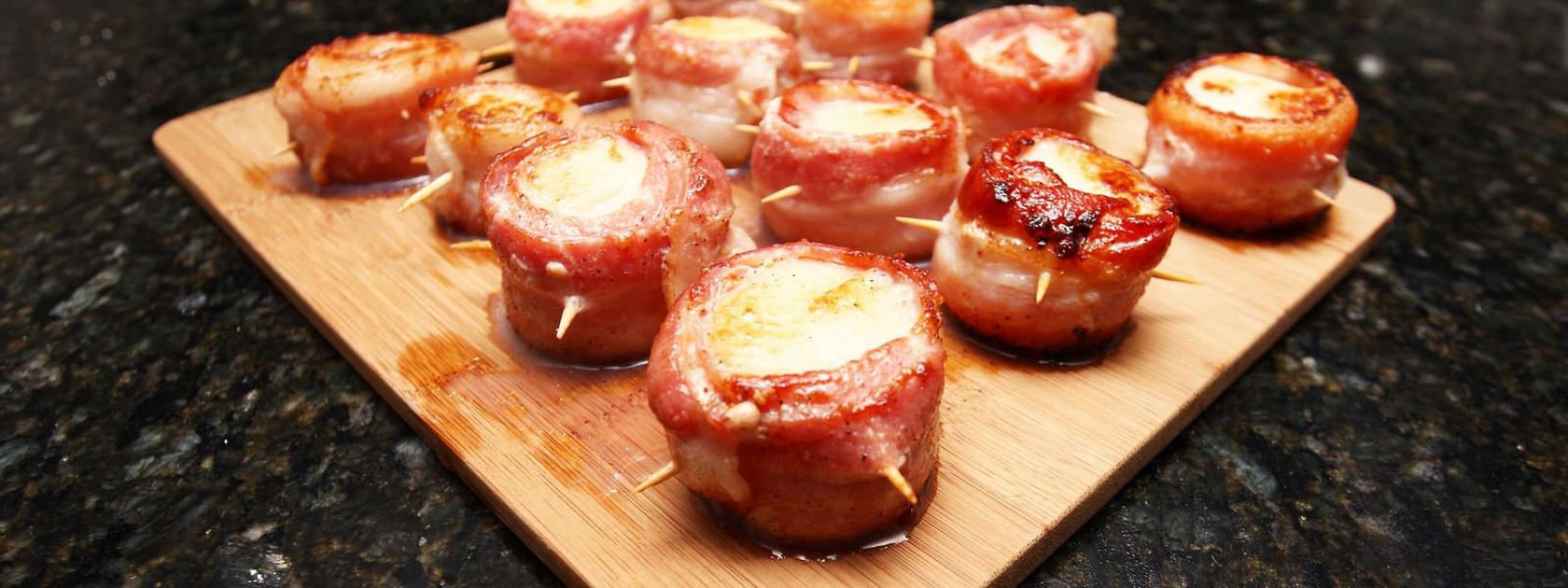
Cook time: 20 minutes
Serves: 8
Ingredients
24 jumbo deep sea diver scallops, dry-packed
1/2 cup butter
Salt
Freshly ground black pepper
1 clove garlic, minced
12 slices thin-cut bacon, cut in half crosswise
Lemon wedges, for serving
Grilled Sea Scallops
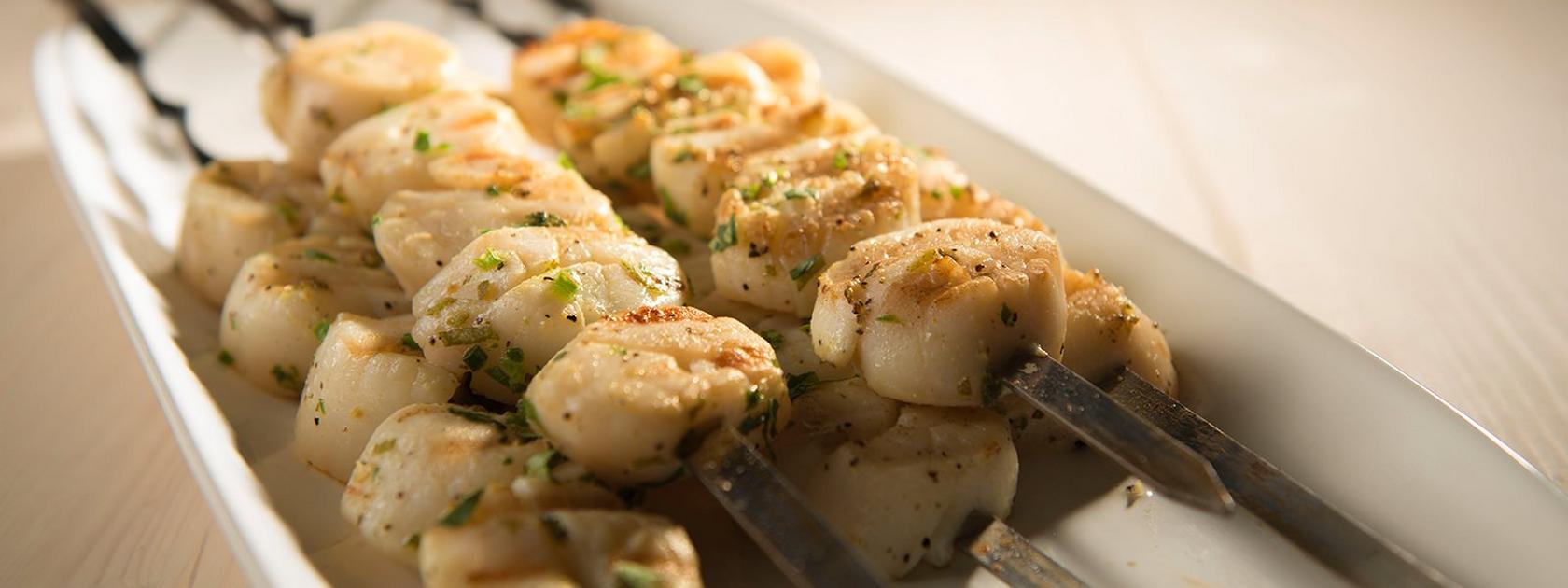
Cook time: 10 minutes
Serves: 4
Ingredients
1 pound sea scallops, shucked
2 whole limes, zested and juiced
2 tablespoons extra-virgin olive oil
1 tablespoon Traeger Beef Rub
1/8 cup green onion, thinly sliced
1 jalapeño, diced
1/8 cup cilantro, finely chopped
Seared Lemon Garlic Scallops

Cook time: 5 minutes
Serves: 4
Ingredients
12 u20 scallops
Kosher salt
Black pepper
1 tablespoon butter
1 tablespoon olive oil
4 tablespoons butter, melted
1 clove garlic, minced
1 lemon, juiced
Chopped parsley, for garnish
Lemon zest, for garnish
Alder Smoked Scallops
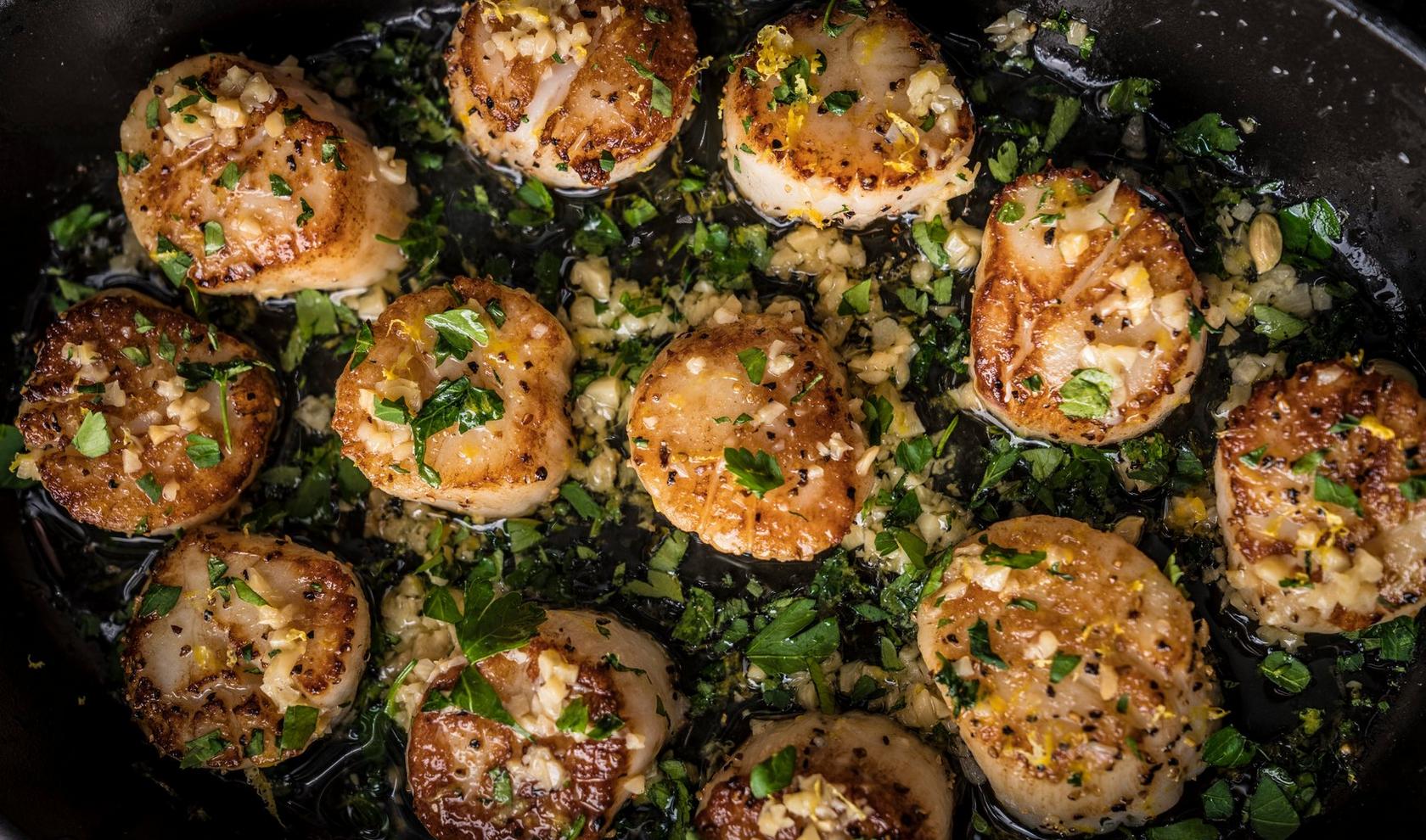
Cook time: 35 minutes
Serves: 4
Ingredients
2 pounds large dry sea scallops
Kosher salt
Freshly ground black pepper
1/2 cup salted butter, melted
1 clove garlic, minced
1 small orange
1/4 teaspoon Worcestershire sauce
1½ teaspoons fresh chopped parsley or tarragon
Flat-leaf parsley, for serving
Bacon Wrapped Scallops
by Traeger Kitchen
17 Reviews
Prep Time
10 Min
Cook Time
20 Min
Serves
8
Pellets
Mesquite
Wrap these seafood bites in salty bacon, then grill them hot and fast for a rich and savory appetizer.
Ingredients
main
| 1/2 Cup | (1 stick) unsalted butter |
| 1 Clove | Garlic, minced |
| 24 | jumbo deep sea diver scallops, dry-packed |
| To Taste | sea salt |
| To Taste | freshly ground black pepper |
| 12 Slices | thin-cut bacon, halved crosswise |
| Lemon wedges, for serving |
1
When ready to cook, set the Traeger to 400℉ and preheat with the lid closed for 15 minutes.
2
Melt the butter in a small saucepan over medium-low heat, then add the garlic and cook for 1 minute. Let cool slightly.
3
Remove the small, crescent-shaped muscle from the side of each scallop, if still attached. Dry the scallops thoroughly on paper towels, then transfer to a medium bowl. Pour the melted butter mixture over the scallops, season lightly with salt and pepper, and gently toss to coat.
4
Wrap a half-piece of bacon around each scallop and secure with a toothpick.
5
Arrange the scallops directly on the grill grates. Close the lid and grill for 15 to 20 minutes, or until the scallops are opaque and the bacon has begun to crisp. If desired, turn the scallops on their side, bacon-side down, turning occasionally, to crisp the bacon. Do not overcook.
6
Transfer the scallops to a platter and serve with lemon wedges.